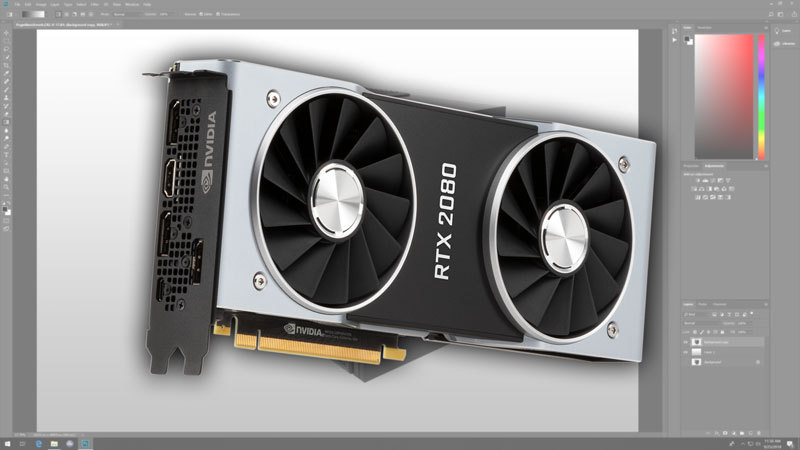Photoshop does utilize the video card to accelerate a number of tasks, but a high end GPU is rarely necessary to get great performance. Do the RTX cards follow this trend, or do the new RT and tensor cores give them a performance advantage?


Photoshop does utilize the video card to accelerate a number of tasks, but a high end GPU is rarely necessary to get great performance. Do the RTX cards follow this trend, or do the new RT and tensor cores give them a performance advantage?

Photoshop is definitely not the target market for AMD’s new Threadripper 2990WX 32 Core or 2950X 16 core CPUs, but even so we wanted to see how it stacks up against the previous generation Threadripper CPUs as well as a number of Intel Core i7/i9 CPUs.

Many users require the use of a workstation graphics card as that is the only way to display 10-bit color in Photoshop. But will an NVIDIA Quadro or an AMD Radeon Pro video card give you the best performance for your dollar?

We are often asked how AMD’s Radeon Vega video cards compare to their NVIDIA GeForce counterparts. Photoshop rarely benefits from having a powerful GPU, but there is still a measurable difference between these two brands of cards.

Adobe has been leveraging the power of the GPU in their software more and more, but is there any reason to spend money on an expensive video card for Photoshop?

AMD has made great improvements with the new 2nd generation Ryzen CPUs that really closes the gap between AMD and Intel for Photoshop users. But is it enough to put them above Intel’s 8th Gen CPUs?

With two more cores over the previous generation, the new Coffee Lake 8th Gen CPUs perform extremely well in certain applications. However, Photoshop has historically struggled with higher core counts so will the new CPUs actually be any faster?

Photoshop may not be the best use case for these new 14, 16, and 18 core CPUs from Intel, but just how much worse are they compared to their lower core count counterparts?

While neither Skylake-X or Threadripper are likely the best choice for a pure Photoshop workstation, Photoshop is such a widely used application that we thought it would be useful to see just how well these two CPU lines perform.
If you are a photo or video editor wondering if you should go with 8-bit or 10-bit hardware, this article is for you!